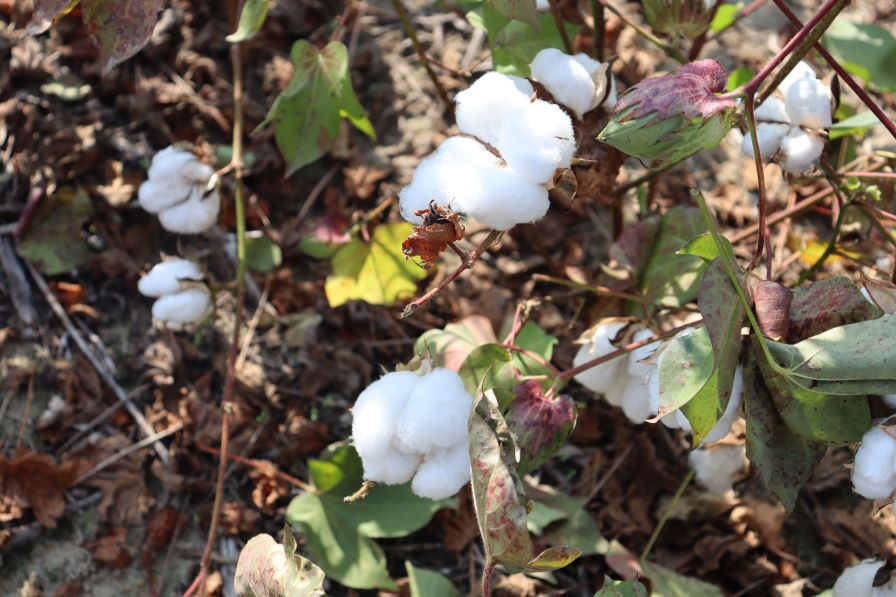Pakistan’s Textile Performance
Pakistan was born in 1947 with a strong cotton production base of 1.1 million bales (at 170 kilograms a bale) and a weak, insignificant base of domestic consumption of 78,000 bales. Consumption was less than 1% of the total production. Taking advantage of the concessions and incentives available through the government intended to expand the textile industry, soon the local entrepreneurs succeeded in establishing a strong spinning base which continued to grow.
The adoption of new cotton production technologies also helped promote the growth of production. Cotton consumption continued to follow cotton production and, after more than 50 years, consumption came closer to production. By the advent of the new century, cotton consumption surpassed production; this excess of consumption over production further strengthened by 30% in 2007/08.
Encountering Obstacles
In 2004/05, Pakistan produced a record high crop of 14.5 million bales, but since this robust harvest, the annual average production has been below 12 million bales. But consumption has still been increasing steadily and in 2007/08, it reached the record high figure of 16.5 million bales. In this current 2008/09 season, cotton production was initially estimated to be at 14.11 million bales, but later it was reduced to 12.6, and then to 12.1 million bales. However, now reliable estimates put it between 11.3 and 11.5 million running bales, which when converted into standard bales of 170-Kg each, comes to between 10.635 and 10.824 million bales. Domestic consumption this season is estimated to be down by about 20%, slipping to 13.2 million running bales. The cause of these disappointing reductions is, as many would assume, the impact of the global recession in financial and economic sectors. In addition to this economic difficulty, deteriorating domestic law and order, a struggling economy, political instability, questionable security and war-like border situations are all taking their tolls on the Pakistani textile sector.
However, the shortfall in domestic requirements could be met through imports of cotton, which may equal 1.5 to 2 million bales. In light of the tough competition in textile exports from China, India, Bangladesh, Vietnam and Sri Lanka, Pakistan can make or improve its viability in textile exports if it increases its cotton production to be at least equal to its domestic requirements because local cotton has cost advantages over imported cotton.
With these barriers in front of us, Pakistan should immediately take actions to incorporate new technologies into their production methods, including Genetically Modified (GM) technologies, and drip irrigation systems to improve its productivity and reduce input costs. Pakistan can easily increase its production to 20 million bales in the next five years by using Bt cotton and other hybrid seeds. The U.S., China, India and many other countries have been significantly benefited by adopting GM technology. India, which shares a number of similar land and climate conditions with Pakistan, has tremendously enhanced its yield by more than 75%. India increased yields from 302 kilograms per hectare in 2002/03 to 540 kilograms per hectare in 2007/08, while in Pakistan the yield increase during this time was not significant.
With a view to increase its production and productivity, Pakistan has approached Monsanto Company for introducing Bt cottonseed in Pakistan, and the matter is progressing. Hopefully Pakistan may put this technology into practice in the next few years. But in reality, as a result of the present set back to our textile industry, we can expect its growth to be hampered in the next two to three years. Pakistan, born as a major cotton exporting country, enjoyed this top position for more than half a century, making record high cotton exports of 4.75 million bales in 1988/89, while in the last seven years, its average yearly exports have been reduced to only 275,000 bales.
A History of Spinning
The growth of the spinning industry remained slow in Pakistan’s early years, but later its speed accelerated. By 1980/81, more than 4 million spindles had been installed and by the end of last century over 9 million spindles had been installed. Of these, about 70% were operational and consumed over 13 million bales. This trend continued and in the 2007/08 season, our domestic cotton consumption soared to a record level of 16.5 million bales.
The end of the quota regime in 1996 and the emergence of a free market greatly helped many countries in the east, such as China, India, Pakistan, Bangladesh, Sri Lanka and Vietnam, in increasing their textile productions and exports to the U.S., EU and other countries of the west. These countries had an edge over other western countries on account of an abundant availability of raw material and cheap labor. As such, Pakistan’s manufacturing capacity for textile goods increased considerably, with the addition of new machinery and modernized equipment occurring mostly by the start of the new century. Yarn production increased by more than 50% in a 12 year period (from 1996 to 2007), but yarn exports increased nominally by only 12%. This means that, due to an increase in domestic weaving capacity, the use of yarn increased considerably.
This is a case of value-addition. If one examines the chart on production, domestic use and export of cloth, it is easy to see that in the 10 year period from 1996 to 2005 the production of cloth increased by 42%, and domestic use by 33%. But exports have increased by an astounding 58%. This confirms that Pakistan is increasingly striving for more on value addition in textiles.
If we look at the figures of Pakistan’s annual textile exports in terms of value in U.S. Dollars, we find textile exports have grown by about 74%, while garments increased by about 92%, and made-ups, including bedding, increades by about 125% from 2000/01 to 2007/08. These figures once again confirm that Pakistan is increasing its textile exports, particularly in value added products.
The global recession in the economy and financial sectors, beginning in the U.S. in July of 2008, has engulfed other heavy consumer countries in the EU. Countries in the East, such as China, India and Pakistan, have lost most of their textile exports that were being moved to these western nations; in short, we have all been adversely affected. In view of the decreasing demand for textile goods from the U.S. and EU, the production in China and India have also slowed down, adversely affecting their economies. Pakistan hopes to improve its growth rate in textiles as soon as this recession shows signs of ending and a revival of economies worldwide begins.
Add charts/graphs









